If you want more traffic from Facebook, you have to focus on getting more shares and likes, right? Although that’s true, it’s not the only way to generate more traffic.
What if we told you that you could get more people to click on your Facebook postings?
Facebook commands 65.7% of the total US social media commerce share of the pie.
With a few tweaks and some best practices in place, you can get more people clicking on your organic posts and heading over to your website.
Yes, we know — Organic Facebook is dead in the water, and it’s all ads now.
Or is it?
We’ll delve into that question more soon.
Let’s begin with:
Call to action
This might be a bold statement — All effective marketing includes some form of call-to-action (CTA).
Facebook is no different. Even if it’s a subtle request for your audience to read your latest blog, you’re still asking them to perform an action.
In the below example, the CTA is very understated — The image has an embedded link that redirects you to this blog.
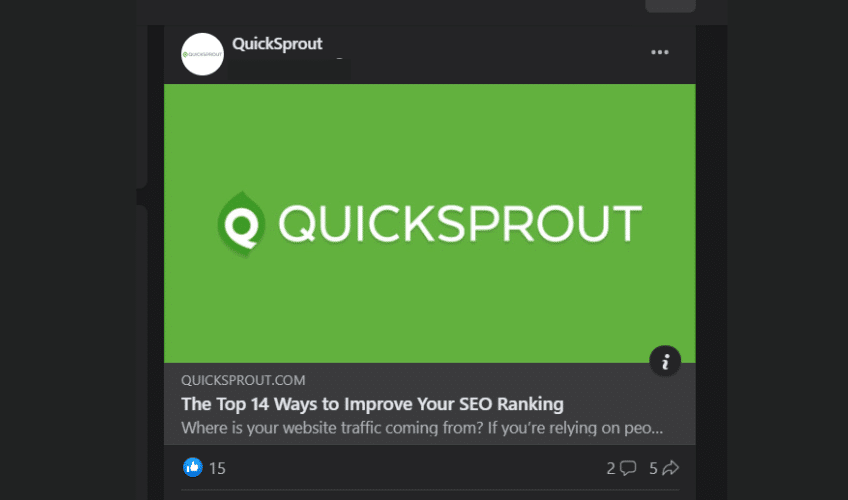
Then there are more on-the-nose CTAs that make that ask.
In this example, lululemon has the marketing chops to do a more obvious CTA with some persuasive copywriting.
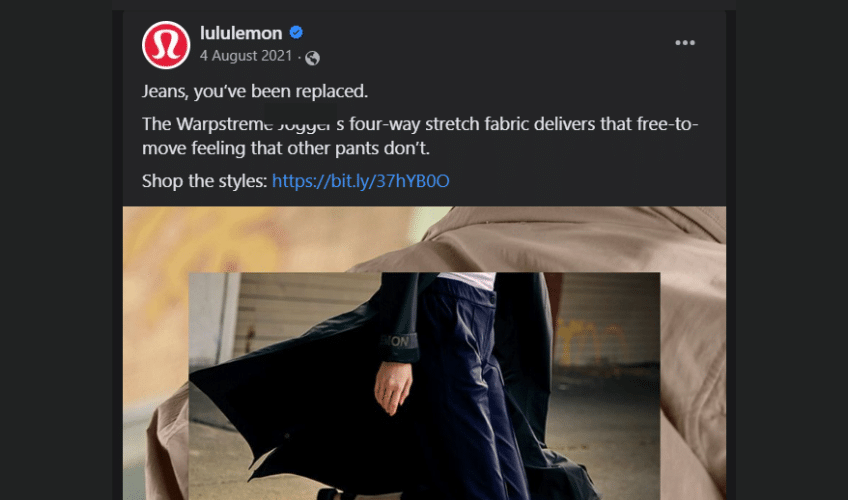
A CTA doesn’t always need to drive sales or traffic — But you should always nudge and encourage your audience to act. It will help your organic engagement and traffic.
Share your thoughts
You don’t want to post a link with an image when you share a link. You want to customize your posting and make it more personal.
We occasionally break this rule, even though our team continually tells us to add two cents when sharing a link.
A good example of this is Amy Porterfield. If you look at her status updates, you’ll see she adds a bit of text to personalize them.
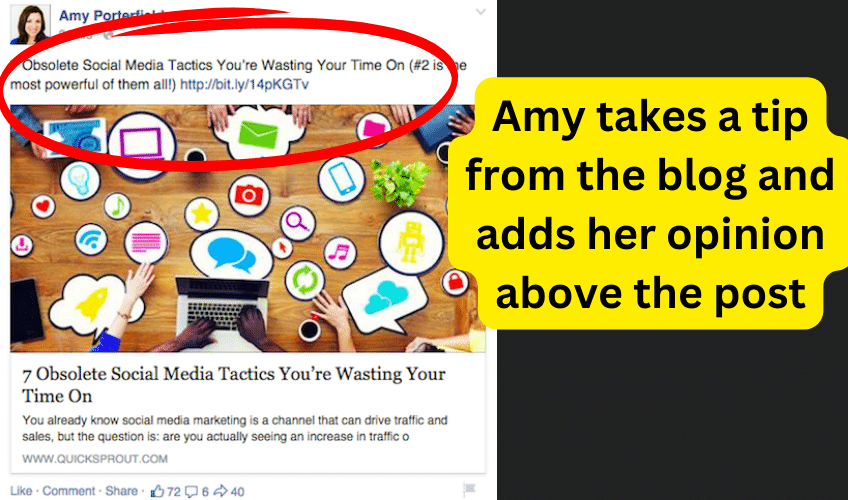
Can you guess the difference in click-through rates between having some text introducing your posting versus not having any? When we tested this several years ago, the difference was 8%.
So if you are going to post a link on Facebook, add your opinion. It doesn’t take more than a few seconds… and the increase in clicks makes it well worth it.
Image colors
What image colors do you think to get the most clicks? Most of the articles you read around the web will talk about one specific color converting better than the rest.
And although it may be true for some websites, it might not be necessarily true for yours.
You have to test how image colors affect your conversion rates. According to our experience, what works on Facebook drastically differs from what works on most websites.
In general, on your own website, images and call-to-action buttons that are high in contrast and stand out tend to get the most clicks.
However, we found that images that blend in get more clicks on Facebook. Images that contain a lot of white, grey, and blue colors, like the hexadecimal color #4c66a4, tend to generate the most clicks.
We saw a huge lift in our click-through rates when using the colours described above. We were able to increase clicks by 16% to 28%.
Open Graph
Chances are you haven’t heard of Open Graph. In essence, it provides you with meta tags to place on your website to ensure that URLs get shared correctly on Facebook.
When you don’t use them, sometimes when other people share your URLs, your posts look like this:
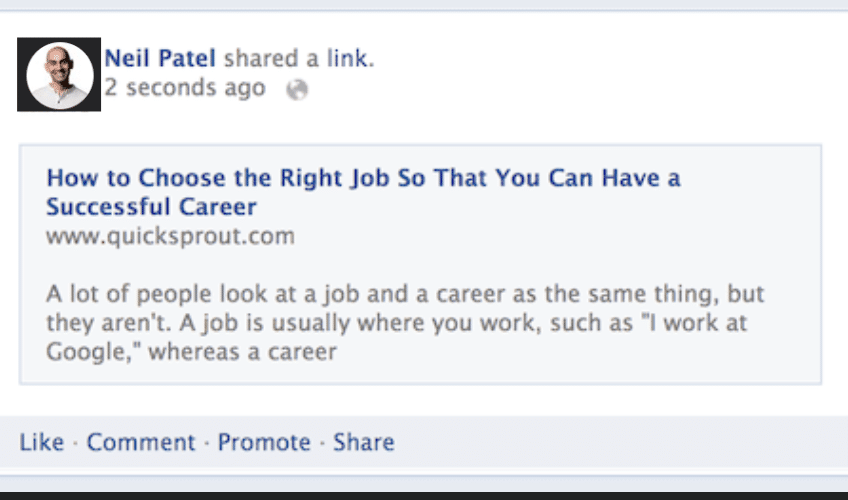
And when you do use the correct social media meta tags, Facebook-shared posts look like this instead:
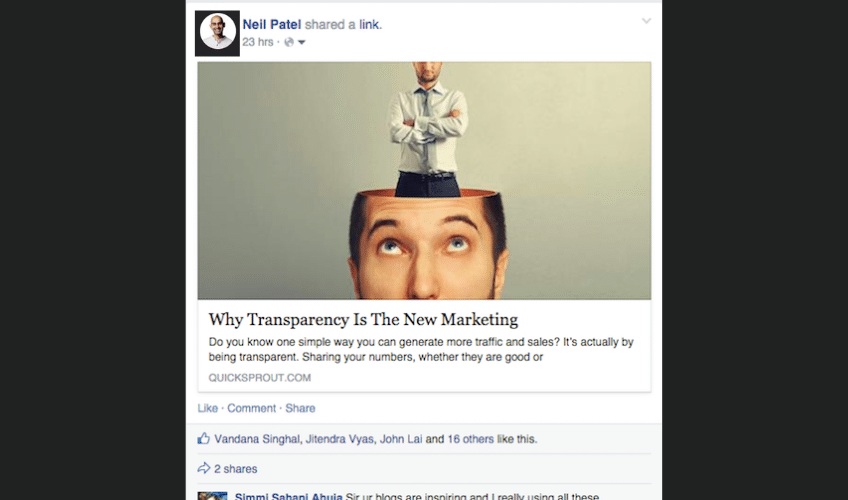
Can you see the difference? One looks pretty, and the other one doesn’t.
Out of all the things we tested to increase click-through rates, this one had the biggest effect.
Post timing and frequency
Did you know that your posting frequency on Facebook affects the number of clicks you generate?
Posts that go up on Thursday and Friday tend to get the most engagement, while posts shared on Monday through Wednesday get 3.5% less engagement.
Timing also has a huge impact. Some people recommend posting between 9 a.m. and 7 p.m., but that window is a bit too big if you ask me. Posting at 1 p.m. tends to generate the highest number of shares while posting at 3 p.m. generates the highest number of clicks.
Your posting frequency also affects the number of clicks you receive. We tested posting with different frequencies, from multiple times daily to only once weekly. We found that posting once every other day will get you the highest number of clicks per post. When you post multiple times daily, some people ignore what you share.
To recap, if you want to get the most clicks, you should:
- Try to share your most valuable posts on a Thursday or Friday
- Post at 3 p.m.
- Space out your posts every other day
Engagement
One interesting thing we noticed is that posts with more engagement received many more clicks.
What we mean by engagement here is comments. In particular, we’re talking about comments left by you.
Let us explain… When someone else leaves a comment on your wall posting, you can either like the comment, delete it, or respond to it. We found that liking the comment didn’t do much, and, of course, you wouldn’t want to delete it, as that would be just rude.
But responding to each and every comment had a huge impact on clicks. Status updates that contained responses received 9% more clicks.
So the next time you post a link on Facebook, make sure you respond to people’s comments. It only helps.
Headline length
You already know headlines affect click-through rates, but have you tested headline lengths on Facebook?
We found that the ideal length for blog headlines is also the ideal length for Facebook headlines. In essence, the shorter the headline, the better.
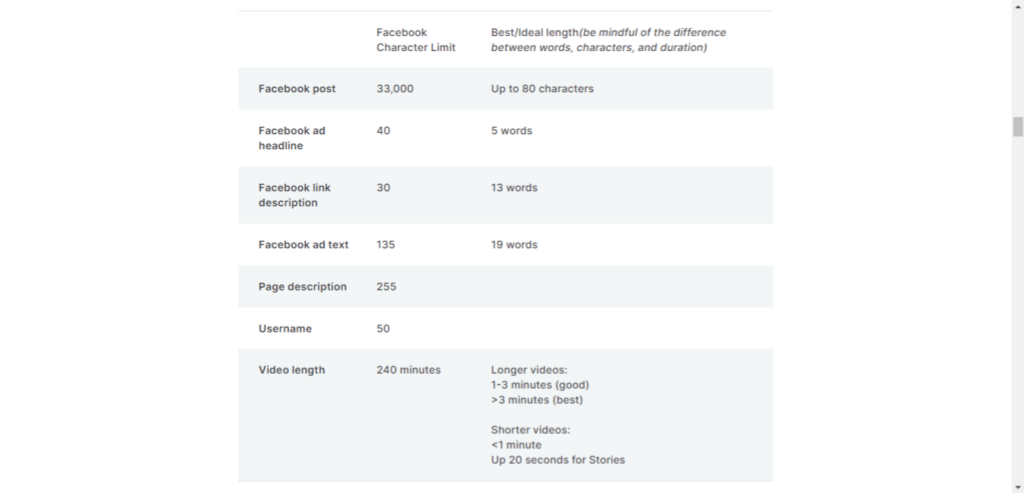
Of course, you can’t have a one-word headline, but ideally, you should keep it to under 80 characters. Similarly to the data from the Fast Company article we linked above, we found that Facebook posts with shorter headlines received more clicks and engagement than those with longer headlines.
On average, updates that contained headlines with fewer than 80 characters tended to get 15.4% more clicks.
Conclusion
The next time you consider posting on Facebook, ask yourself… are you following the seven tips above?
Following the tips above, you’ll notice more traffic from Facebook. But don’t just take our word for it — try it out yourself.
